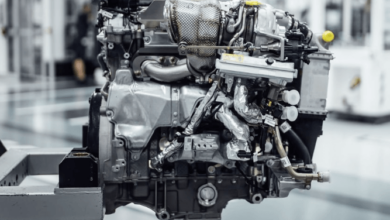The Importance Of Maintenance On Used Motorcycles

In this article, we will get to the significance of performing regular maintenance on used motorcycles. By observing proper care and upkeep, motorcycle enthusiasts can enjoy a more prolonged and safer motorcycling experience.
As a used motorcycle owner, staying informed and diligent about necessary maintenance procedures can save you money in the long run and contribute to the longevity of your vehicle.
Understanding the Need for Motorcycle Maintenance
Maintaining a used motorcycle is crucial for ensuring a longer lifespan, preserving its value, and promoting safety during rides. Properly maintained vehicles will run more efficiently, resulting in enhanced performance and fuel efficiency. Keeping up with routine motorcycle maintenance can also help detect and prevent potential failures or breakdowns, reducing the likelihood of costly repairs, and potentially dangerous incidents on the road.
The Role of Regular Maintenance in Motorcycle Longevity
Motorcycle manufacturers often provide a recommended maintenance schedule to help owners keep up with essential checkups and services.
A. Emphasizing the Need for Regular Checkups
Routine maintenance checkups should include inspections of the engine, tires, suspension, and brake systems, as well as fluid and oil changes. Setting up a maintenance calendar and adhering to it will ensure that your motorcycle remains in tip-top shape, thus preserving its value and extending its lifespan.
B. The Consequences of Neglecting Regular Maintenance
Failing to follow proper maintenance routines can lead to a multitude of issues for your motorcycling experience. These issues may include engine breakdowns, decreased fuel efficiency, a decrease in ride comfort, and diminished resale value.
Furthermore, neglecting essential maintenance can subsequently lead to hazardous situations on the road, such as tire blowouts or brake failures. By staying proactive and diligent with maintenance, motorcycle owners can avoid these potential issues and enjoy a safer and more reliable ride.
Tire Maintenance: A Critical Aspect for Motorcycle Performance
Tire maintenance should remain a priority for all motorcycle owners, as it significantly impacts performance, safety, and comfort. Proper tire pressure and tread depth ensure that the motorcycle handles optimally and provides sufficient grip on varying road conditions.
Neglecting tire inspections may lead to premature wear, poor fuel efficiency, and compromised safety. To ensure optimal tire performance, check the tire pressure, examine the tread depth, and observe the overall state of the tires on a regular basis.
1. How To Check The Tire Pressure on a Motorcycle
Maintaining appropriate tire pressure is vital for achieving optimal fuel efficiency, handling, and ride comfort. To check tire pressure, you will definitely need a tire pressure gauge, which is sold at most auto stores. Perform the following steps:
- Ensure that the motorcycle is parked on a level surface and the tires are cold.
- Locate the tire valve stem, remove its cap, and attach the tire pressure gauge.
- Read the gauge’s measurement and compare it to the recommendations listed in your motorcycle owner’s manual.
- If the tire pressure is not within the recommended range, adjust it accordingly by inflating or deflating the tire.
- Replace the valve stem cap after achieving the appropriate pressure.
By adhering to these steps, you can truly ensure that your motorcycle has the proper tire pressure for optimal safety and performance.
2. The Importance of Checking Tread Depth
Tread depth is essential for maintaining adequate traction and preventing hydroplaning on wet surfaces. The Motorcycle Industry Council recommends replacing tires before the tread depth reduces to 2/32 of an inch (1.6 millimeters).
To measure tread depth, you can use a simple tool known as a tread depth gauge or employ the penny test. For the penny test, follow these steps:
- Position a penny with Lincoln’s head facing down into a tread groove.
- If the top of Lincoln’s head is visible, the tread depth has likely diminished to a critical point, indicating that it’s time to replace the tire.
Make it a habit to check the tread depth regularly, as it is a crucial component of motorcycle safety.
3. Recognizing and Understanding Tire Wear
Tire wear can result from multiple factors such as under or over-inflation, improper alignment, or an unbalanced suspension system. Recognizing and addressing abnormalities in tire wear is crucial for maintaining motorcycle performance and safety, as uneven wear can lead to loss of traction, reduced stability, or potential blowouts.
Here are common types of tire wear to be aware of:
- Center Wear: Caused by over-inflation and most evident as excessive wearing in the middle of the tire.
- Sidewall Wear: Typically occurs as a result of under-inflation, leading to wear on the tire’s shoulders and sidewalls.
- Cupping or Scalloping: Manifests as wavy patterns on the tire, often due to improper suspension setup or worn components.
Frequent tire inspections prove invaluable in identifying and addressing the early stages of tire wear. By promptly rectifying issues, you can ensure the ongoing safety and handling of your motorcycle.
Lubrication System: The Lifeblood of a Motorcycle’s Performance
Motorcycle oil levels and quality significantly influence the performance, efficiency, and longevity of the engine. Oil lubricates internal engine parts, reducing friction and heat. Meanwhile, it also serves to clean, cool, and seal the engine’s intricate components.
To check your motorcycle’s oil, follow these steps:
- Park your bike on a level surface and ensure it’s standing straight.
- Let the engine cool for a few minutes before checking the oil level.
- Locate the sight glass or dipstick (depending on your motorcycle model).
- If your bike has a sight glass, you should see the oil level between the two marks; if it’s low, add oil.
- If your bike has a dipstick, remove it, wipe it clean, and then reinsert it; pull it out again to check the oil level.
Regular oil changes are vital to rid the engine of accumulated debris and ensure efficient performance. The frequency of oil changes may depend on numerous factors, like the type of oil used, the motorcycle’s age, and usage habits.
Brake System Maintenance: Ensuring Safety
The brake system is the most crucial safety component of a motorcycle. Regular inspections of brake pads, rotors, and fluids are imperative to ensure optimal braking performance and prevent accidents.
Brake pads gradually wear down over time and need regular checking to ensure they still have enough material to effectively stop the bike. You should be able to inspect them visually in most bikes. If the pads have worn below the minimum allowable thickness (usually around 2mm), they should be replaced.
Rotors also wear over time and can warp due to heat or impact. In either case, a warped rotor needs to be replaced. To check rotors, look for grooves or scoring marks on the surface.
Brake fluid, meanwhile, attracts moisture that can degrade braking power over time. It should be checked regularly and replaced every one or two years, depending on the manufacturer’s recommendations.
Conclusion: Reaffirming the Importance of Motorcycle Maintenance
The importance of regular maintenance for used motorcycles especially used Harley-Davidson motorcycles cannot be overstated. A well-maintained bike will function efficiently, perform excellently, and provide maximal safety, thereby leading to an overall inspiring and secure riding experience.
By diligently following maintenance schedules and promptly carrying out necessary checkups, motorcycle owners, in addition to negating hazardous situations, can also circumvent costly, unanticipated repairs. Keep in mind: Maintaining your motorcycle doesn’t just secure the bike – it protects you, the rider. Ride on, and ride safe!




